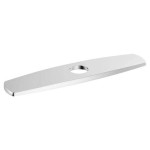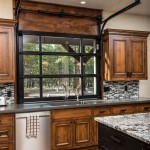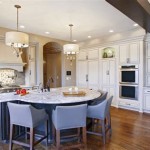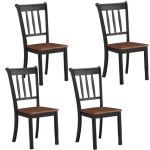Small Kitchen Fans With Lights: Functionality and Illumination in Compact Spaces
Small kitchen fans with lights represent a practical solution for addressing ventilation and lighting needs in kitchens where space is at a premium. These appliances combine the functionality of an exhaust fan, which removes cooking odors, smoke, and excess moisture, with the convenience of an integrated light fixture, providing illumination for food preparation and other tasks. The compact design of these units makes them suitable for apartments, condominiums, and smaller homes where traditional range hoods or ceiling fans might be impractical. Understanding the features, benefits, and installation considerations of small kitchen fans with lights can help homeowners make informed decisions about improving their kitchen environment.
The kitchen, often considered the heart of the home, is a space where diverse activities take place, from cooking and baking to socializing and even working. These activities generate heat, odors, and humidity, which can contribute to discomfort and potentially damage surfaces over time. Effective ventilation is crucial for maintaining a healthy and comfortable kitchen environment. Similarly, adequate lighting is essential for safety and efficiency, ensuring that countertops and stovetops are well-lit for food preparation. Small kitchen fans with lights offer a combined solution, addressing both ventilation and lighting needs in a single, space-saving appliance.
Key Benefits of Small Kitchen Fans with Lights
Small kitchen fans with lights offer several advantages over separate ventilation and lighting systems. These benefits include space efficiency, cost-effectiveness, ease of installation, and improved air quality. Each of these aspects contributes to the overall functionality and convenience of these appliances.
Space Efficiency: One of the primary advantages of small kitchen fans with lights is their space-saving design. In compact kitchens where every inch of space is valuable, combining ventilation and lighting into a single unit is highly beneficial. Unlike bulky range hoods that can dominate the visual landscape of a small kitchen, these fans are typically designed to be unobtrusive and blend seamlessly with the existing décor. They can be mounted under cabinets, on walls, or even on the ceiling, maximizing available workspace and storage.
Cost-Effectiveness: Installing separate ventilation and lighting systems can be costly, requiring the purchase of multiple appliances and potentially involving extensive electrical work. Small kitchen fans with lights offer a more economical solution by providing both functionalities in a single unit. This reduces the initial purchase price, as well as the cost of installation. Over time, energy-efficient models can also contribute to lower electricity bills, further enhancing their cost-effectiveness.
Ease of Installation: Many small kitchen fans with lights are designed for relatively straightforward installation, making them suitable for DIY projects. While some models may require professional installation, others can be installed with basic tools and electrical knowledge. This can save homeowners money on labor costs and allow them to quickly improve their kitchen environment. Clear and concise installation instructions are typically included with the appliance, further simplifying the process.
Improved Air Quality: Effective ventilation is essential for maintaining good air quality in the kitchen. Small kitchen fans with lights help to remove cooking odors, smoke, and excess moisture, preventing the buildup of airborne contaminants. This can reduce the risk of respiratory problems and improve overall comfort. Some models are equipped with filters that further enhance air purification by trapping grease and other particles.
Types of Small Kitchen Fans with Lights
Small kitchen fans with lights are available in various types, each designed to meet specific installation requirements and performance expectations. These types include under-cabinet fans, wall-mounted fans, and ceiling-mounted fans. Each type has distinct features and benefits that make it suitable for different kitchen layouts and ventilation needs.
Under-Cabinet Fans: Under-cabinet fans are designed to be installed beneath kitchen cabinets, directly above the stovetop. This placement allows for efficient capture of cooking odors and smoke as they rise. These fans are typically compact and discreet, blending seamlessly with the underside of the cabinet. They often feature adjustable fan speeds and integrated lighting, providing both ventilation and illumination for the cooking surface. Under-cabinet fans are a popular choice for kitchens with limited space and standard cabinet configurations.
Wall-Mounted Fans: Wall-mounted fans are installed directly on the wall, typically above the stovetop. These fans are often more powerful than under-cabinet models, offering higher airflow rates for more effective ventilation. They can be a good option for kitchens where there are no cabinets above the stovetop or where a more prominent ventilation solution is desired. Wall-mounted fans may come in a variety of styles and finishes, allowing homeowners to choose a model that complements their kitchen décor. The installation process is generally straightforward, requiring only basic tools and electrical knowledge.
Ceiling-Mounted Fans: Ceiling-mounted fans are installed on the ceiling, providing ventilation for the entire kitchen area. These fans are typically larger and more powerful than under-cabinet or wall-mounted models, offering superior airflow rates and coverage. They can be a good option for larger kitchens or kitchens with high ceilings. Ceiling-mounted fans often come with remote control operation and multiple fan speeds, allowing for customized ventilation settings. Installation may require more extensive electrical work and is often best left to a professional.
Factors to Consider When Choosing a Small Kitchen Fan with Light
Selecting the right small kitchen fan with light requires careful consideration of various factors, including fan power (CFM), lighting type (LED, halogen, incandescent), noise level (sones), filter type (grease filters, charcoal filters), and ease of cleaning and maintenance. Evaluating these factors can help homeowners choose a model that meets their specific needs and preferences.
Fan Power (CFM): Cubic feet per minute (CFM) is a measure of airflow rate, indicating the volume of air that the fan can move in one minute. A higher CFM rating means that the fan can remove more cooking odors, smoke, and moisture from the kitchen. The appropriate CFM rating for a kitchen fan depends on the size of the kitchen and the type of cooking that is typically done. A general guideline is to have a CFM rating that is approximately equal to half the square footage of the kitchen. For example, a 100-square-foot kitchen would require a fan with a CFM rating of at least 50.
Lighting Type: The type of lighting used in a kitchen fan can significantly impact its energy efficiency, brightness, and lifespan. LED lighting is a popular choice due to its energy efficiency, long lifespan, and bright, clear light output. Halogen lighting is another option, offering a similar brightness to LED lighting but with a shorter lifespan and higher energy consumption. Incandescent lighting is the least energy-efficient option and has the shortest lifespan, but it is often the most affordable. When choosing a kitchen fan with light, it is important to consider the type of lighting and its impact on energy consumption and maintenance requirements.
Noise Level (Sones): The noise level of a kitchen fan is measured in sones, with a lower sone rating indicating a quieter fan. A fan with a sone rating of 1 or less is considered very quiet, while a fan with a sone rating of 4 or more is considered quite noisy. When choosing a kitchen fan, it is important to consider the noise level, especially if the kitchen is located near living areas or bedrooms. A quieter fan will create a more comfortable and peaceful environment.
Filter Type: Kitchen fans are typically equipped with filters that trap grease and other particles, preventing them from entering the fan motor and ductwork. Grease filters are made of metal mesh or fiberglass and are designed to be washable or replaceable. Charcoal filters are used to remove odors and are typically disposable. When choosing a kitchen fan, it is important to consider the type of filter and its ease of cleaning and maintenance. Washable grease filters are a good option for those who want to reduce waste and save money on replacement filters.
Ease of Cleaning and Maintenance: Regular cleaning and maintenance are essential for keeping a kitchen fan operating efficiently and effectively. The fan blades, filters, and exterior surfaces should be cleaned regularly to remove grease, dust, and other debris. Some kitchen fans have removable parts that can be easily cleaned in the dishwasher. When choosing a kitchen fan, it is important to consider its ease of cleaning and maintenance. A fan that is easy to clean and maintain will require less effort and time to keep in good working condition.
Installation Considerations for Small Kitchen Fans with Lights
Proper installation is critical for ensuring the safe and effective operation of a small kitchen fan with light. This includes ensuring adequate electrical connections, proper ductwork (if applicable), and compliance with local building codes. Addressing these considerations can help prevent electrical hazards, ensure optimal ventilation performance, and avoid potential code violations.
Electrical Connections: Installing a kitchen fan with light typically requires connecting it to an existing electrical circuit. It is important to ensure that the electrical circuit is properly grounded and has sufficient amperage to handle the fan's power requirements. If the existing electrical circuit is not adequate, it may be necessary to install a new circuit, which should be done by a qualified electrician. Improper electrical connections can lead to electrical hazards, such as shocks and fires.
Ductwork (if applicable): Some kitchen fans require ductwork to vent the exhaust air to the outside. The ductwork should be sized appropriately for the fan's CFM rating and should be installed according to local building codes. Improper ductwork can restrict airflow and reduce the fan's effectiveness. It is also important to ensure that the ductwork is properly sealed to prevent air leaks.
Compliance with Building Codes: Kitchen fan installations are subject to local building codes, which may specify requirements for ventilation rates, ductwork, and electrical connections. It is important to check with the local building department to ensure that the installation complies with all applicable codes. Failure to comply with building codes can result in fines or other penalties.

Small Kitchen Fan With Light Discount

Madshne Caged Ceiling Fan With Lights Remote Control 20 Small Farmh Best Farmhouse Garden

Kitchen Ceiling Fan Hunter

Enclosed Ceiling Fans With Lights And Remote 10 Inch Mini Bladeless Fan Light Family Summer Gift For

Antoine 20 In Indoor 4 Light Small Black Caged Ceiling Fan With Farmhouse Enclosed Remote Hd Cf 16 The Home

Wwm 20 Flush Mount Caged Ceiling Fan With Light Low Profile Farmhouse Fans Remote 3 Speeds Reversible Motor For Small Space Lights Fixtures 5 E26 Bulbs Include

Holaki 20 Caged Ceiling Fans With Lights And Remote Flush Mount Low Profile Bladeless Fan Small Farmhouse Enclosed

Bladeless Ceiling Fans Exhale

Mini Ceiling Fan With Light Sold On Temu United States

20inch Small Enclosed Bedroom Kitchen Ceiling Fan With 6 Speeds Remote Control Ebay








